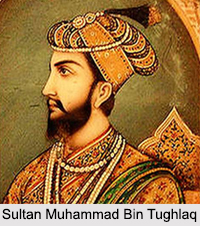 The power of the Sultans depended largely on their military administration. Every Sultan of the Delhi Sultanate kept a large army at the center. The army played an important role in extending and expanding the empire of the Delhi Sultanate. The Sultans faced resistance from the Hindu kings and the also faced the invasions of the Mongols, thus a strong army was the necessity of the rulers of Delhi Sultanate. Different Sultans improved the organisation of their army and methods of warfare.
The power of the Sultans depended largely on their military administration. Every Sultan of the Delhi Sultanate kept a large army at the center. The army played an important role in extending and expanding the empire of the Delhi Sultanate. The Sultans faced resistance from the Hindu kings and the also faced the invasions of the Mongols, thus a strong army was the necessity of the rulers of Delhi Sultanate. Different Sultans improved the organisation of their army and methods of warfare.
The army of the Delhi Sultanate consisted of four types of soldiers. Firstly, the soldiers, who, were recruited by the centre as soldiers of the army of the Sultan. The army which was constituted by these soldiers was called Khasah-khail. Ala-ud-din Khilji kept a large standing army at the centre which included 4, 75,000 horsemen besides the infantry. Ghiyas-ud-din Balban and Muhammad Bin Tughlaq also kept standing armies at the centre. But, the rest of Sultan, prior or them, failed to keep such standing armies at the centre. This army was looked after by the Diwan-i-ariz who was responsible for its recruitment, organisation, maintenance, salary etc. There was no regular course of training for these soldiers. Every soldier was responsible to improve his talents as he desired. The second category of soldiers was those who were employed on permanent basis by nobles and provincial governors. It was expected that the nobles and governors would place their armies before the Sultan for inspection every year but this rule was normally not observed. They brought their armies to the service of the Sultan only when ordered. The third category was those soldiers who were recruited only in times of war on temporary basis and were paid only for that period. Lastly, there are the Muslim soldiers who joined the army as volunteers at times of war against the Hindus. They considered such wars as holy war that is jihad. They were not paid for their services but were given share out of the booty captured in the war.
The army of the Delhi Sultanate primarily consisted of cavalry, infantry and elephants. The backbone of the army was the cavalry. There were two types of cavalry men, one, the Sawar who kept one horses and the other, the do-asga who kept two horses. Ala-ud-din Khalji started the practice of branding the horses and that of keeping huliya (descriptive roll) of the soldiers so that the horses and soldiers could not be changed. Every horse-man kept two swords, one javelin and a bow and arrows with him. They also kept a shield, armour and a head-gear for self protection. The success of the army largely depended on the strength and mobility of the cavalry. The trained war elephants were the second most important part of the army. Only sultans had the privilege to keep elephants. There was a separate department for the training and maintenance of elephants. They were also armoured during the course of battles. The third part of the army was the infantry. The foot-soldiers were called payaks. They were armed with swords, spears and bows and arrows. The Sultan maintained a large number of boats as well, primarily, for transport purposes but for fighting as well.
The army of the Sultan consisted of soldiers of different nationalities and diverse faiths. The Persians, the Afghans, the Mongols, Indian Muslims, the Hindus etc. were all recruited in the army but the higher offices were mostly allocated to foreign Muslims. The organisation of the army and the division of ranks rested primarily on decimal system. However this system was not observed strictly as the promotion and dismissal of every officer depended on the personal good will of the Sultan. All the rulers of the Delhi Sultanate mostly pursued the same tactics in war. The spies were sent out to find out the movements of the enemy and the advance guard was sent to test its strength. The army was divided into four parts at the time of war, that is, the center, the left, the right and the reserved.
The Sultan kept permanent armies in every fort and at all strategic points within his kingdom. The forts were regarded as the main line of defense and every care was taken of its safety. The Sultan was himself the commander-in-chief of the army. But when he could not go, he appointed others as commanders for various military campaigns. The strength and the efficiency army largely depended on the personality and capability of the Sultan. Iltutmish, Ala-ud-din Khilji, Ghiyas-ud-din Tughlaq, Muhammad Bin Tughlaq and similar capable Sultans made their armies effective forces both in defence and offence while the same army weakened itself when led by incapable Sultans.



















